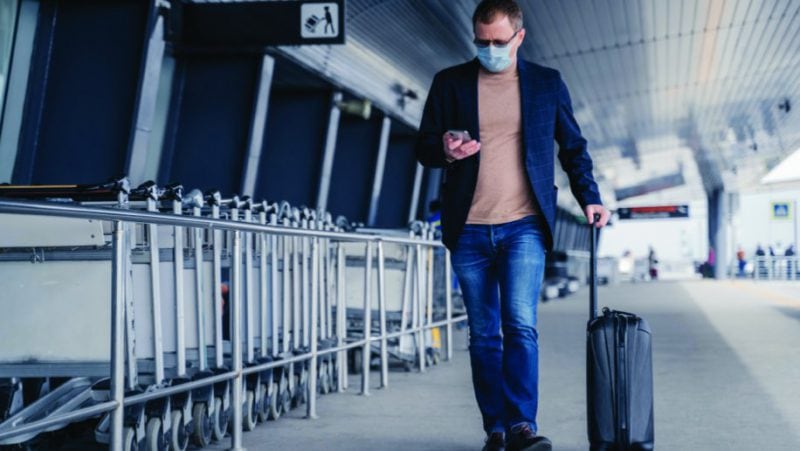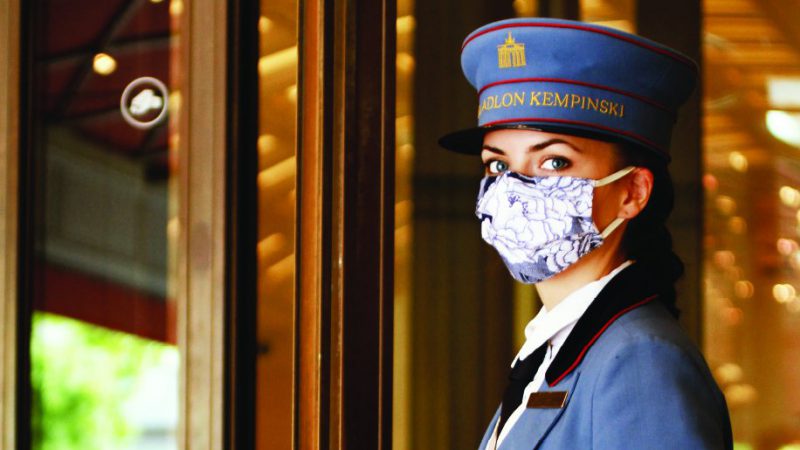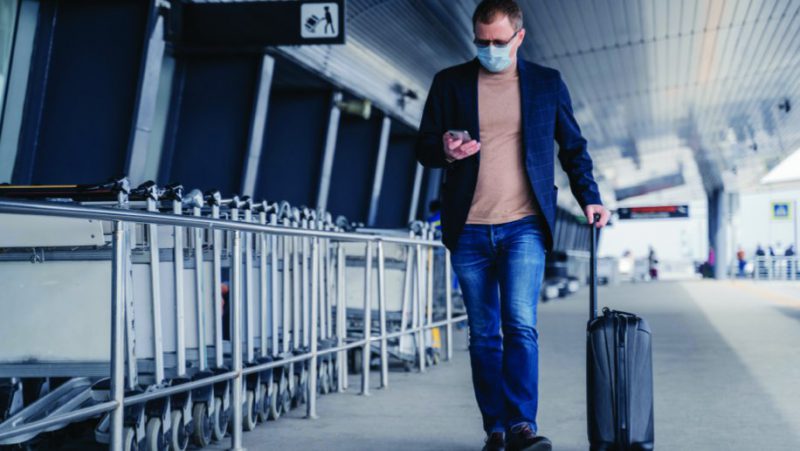Navigating the Way Forward
The New Normal in travel hardly seems normal at all – but travel is still worth the trip
July 1, 2020


As the global pandemic – or at least the global panic that’s accompanied it – begins to ebb, and the world starts to chart the its course back, we travelers are entering some murky and unfamiliar territory.
We can’t go back, though, so the only choice is the way forward.
Now the “way forward” for the travel industry will appear mystifying at first, and there is no timeline yet for how long these new measures will endure. There are masks and plastic barriers, disinfectants and UV robots, and truckloads of hand sanitizer. There is also more apprehension and often some confusion.
But, the way forward is also hopeful and bright. There is opportunity for improvement and energy for making the world a better and healthier place. There is also the desire for a robust economy, in which travel plays a fundamental role.
There is a cautious way to approach travel as businesses and organizations churn back to work. Perhaps the most important thing to remember, however, is that we must see things differently. We need to take a “half glass full” approach and be aware of the potential we do have rather than ticking off the things that are different or missing from the travel experience.
Let’s be mindful of the freedom and joy that travel can bring. Making a list of all the things we dislike about the “new normal” is certainly a recipe for disappointment. There will be many things that are not like they once were, but travel can still deliver fruitful results for commerce, for relationships, and for the curious minds among us.
With that in mind, there are sure to be some changes on your next trip.
Plexiglas & Perplexities
The International Air Transport Association and Airports Council International have partnered to produce what they call a “joint approach” to “multi-layered biosecurity measures to protect health and safety.”
In a statement introducing the measures, ACI World director general Angela Gittens said, “There is currently no single measure that could mitigate all the risks of restarting air travel. But we believe a globally-consistent, outcome-based approach represents the most effective way of balancing risk mitigation with the need to unlock economies and to enable travel.”
Certainly technology will play a role; online check-in and mobile boarding passes were already popular and will become more so. However some travelers will still need to check in at the airport if they have bags or need to have international documents checked. There, Plexiglas shields protect people at various touchpoints like ticket counters, but they are transparent, which means a smile and a kind word can still go a long way in humanizing this abnormal experience.
The way forward will require patience, humility and a sense of humor, for sure.
Transportation Security Administration checkpoints are different, too. In addition to plastic barriers, there are fewer hands touching our belongings, but to achieve that, travelers will need to make some preparations. Remember to remove things like liquids, electronics and food items from your bags if you do not have TSA Pre-Check. This will make screening go smoother.
One thing that has not changed are those grubby plastic bins you must use at security. Despite efforts to sanitize them regularly, they are still dirty because some people place their shoes in them instead of on the conveyor belt. Remember to bring plastic bags to protect food and toiletries that have to go in those bins. This is smart practice even in “the old normal.”
Luckily, liquid restrictions have been eased to allow more than 3.4 ounces of hand sanitizer to be carried through security. All other liquids must still meet the standard size requirements.
In airports, don’t be surprised to find airport robots busy at work. For example, Pittsburgh International is using autonomous robots to disinfect the terminal with ultraviolet light technology. The machine, originally designed to clean floors, was adapted with UV light. It uses water pressure and chemical disinfectant to clean the floor followed by intense UV light to sanitize surfaces.
Cincinnati/Northern Kentucky International Airport is also using robots to help airport staff when sanitizing the terminal. Thanks to 3-D sensors, cameras and artificial intelligence, the robots don’t bump into anything when on their appointed rounds.
 Come Fly with Me
Come Fly with Me
If you have access to an airport lounge, self-serve buffets look slightly different. Pre-packaged (or pre-portioned) snacks replace larger serving dishes, but most lounges will still have their bars open for drinks.
Airlines are not reopening all of their lounges at once, which makes sense as carriers balance cost control with demand. The first lounges to reopen will be those in major hubs, although many airlines are still using some closed lounges as customer service centers for passengers who need assistance.
Airlines have taken extraordinary measures to show the flying public that cleanliness on planes is a focus right now. Requiring masks inflight (and at many airports) and reducing inflight service were needed steps to coax people back into the skies. It is not clear how long these procedures will last, but they were and are important to convince the traveling public, as well as airline crews, that their safety is paramount.
Social distancing on a plane is simply not feasible, and most passengers taking to the skies understand that. For those who insist on social distancing, car, boat, or private plane travel may be more suitable. Of course, the high cost often prohibits that, and travelers should weigh their risk tolerance with price before heading to the airport and complaining that the seat next to them is occupied.
There are only so many reasonable measures an airline can take without raising ticket prices substantially, which is what would happen if a large chunk of seats on a plane were to be blocked indefinitely.
Robots & White Gloves
The hospitality industry is absolutely taking a hit. But hoteliers are making incredible strides to assure people that hotels are safe. Almost every major brand, as well as industry associations, have announced some kind of programs devoted to clean and sanitary operations involving hospital-grade cleaning products and safety protocols. Expect regular (sometimes more than hourly) cleaning of public areas, furnishings and signage that promotes social distancing, and hand-sanitizing stations everywhere.
Digital check-in options, nothing new to the industry, are having their moment in the spotlight as people seek ways to reduce human interaction. If you haven’t already, consider downloading hotel apps and syncing your phone’s Bluetooth capability to unlock the room door instead of using a physical key.
Hyatt has announced that, by September, each of its hotels worldwide will have a “Hygiene and Wellbeing Leader” on staff. This new responsibility will oversee onsite sanitation protocols.
Other hotel companies are partnering with well-known brands in their COVID-19 response programs. Hilton’s CleanStay with Lysol Protection rolled out in June across North America. Hilton also consulted with Mayo Clinic Infection Prevention and Control teams in launching the initiative.
Hilton will place a CleanStay room seal on doors to indicate that it has not been accessed following its latest cleaning. The hotel company is also reducing in-room touch points like pens, note pads, and directories where possible, or at least supplying alternatives.
Anantara Hotels & Resorts is conducting temperature checks for arriving guests and sanitizing guest luggage. All Anantara properties now have a “Guest Guardian” position whose role is to focus on the company’s additional cleaning efforts and safety compliance for all guest touchpoints. The company has also invested in UV light sterilization and disinfection equipment.
Like airports, hotel robots are having their moment, too. The Westin Houston Medical Center actually sends the LightStrike Germ-Zapping Robot into each room to destroy viruses, bacteria and fungi using intense pulsed xenon UV light. This is the same type of equipment used in healthcare facilities, and each visit takes only a few minutes to fully sanitize the room.
Accor is targeting meeting planners by extending its ALL Stay Well cleanliness protocols to its conference areas. Its ALL Meet Well program looks specifically at the nearly two dozen touch points that conference attendees encounter when traveling for events.
The initiative places special importance on areas like the business center and function rooms. Banquets will no longer have pre-set items on the tables; instead, these will be delivered once attendees are seated. Other catering changes include individual-use condiments and bottled water. Signage will indicate one-way travel in the aisles of meeting rooms, and chairs will be spaced apart in addition to leaving wider aisles for people to pass.
Like many hotels with flexible reservation policies, Accor’s ALL Meet Well program extends the same opportunities for events scheduled this year.
Let’s face it. Staying in a super-sterile hotel can feel rather, well, sterile. To keep all the new cleaning and sanitation programs from making their hotels seem too much like a hospital, Kempinski’s new protocols, dubbed “Kempinski White Glove Service,” take a nuanced approach by blending precaution with luxury.
Staffers don designer white gloves with the Kempinski flower print when interacting with guests; each employee has several pairs so they can be changed and washed regularly. In rooms, guests will find hand sanitizer and masks, and pillow protectors provide an additional lining between the pillow and the standard pillow cover.
Yes, the way forward will certainly be different, but it cannot shake the overall purpose and spirit of travel. Neither masks nor Plexiglass can deter us from our capacity to explore, to connect, and to build bridges of cultural understanding wherever we go.




